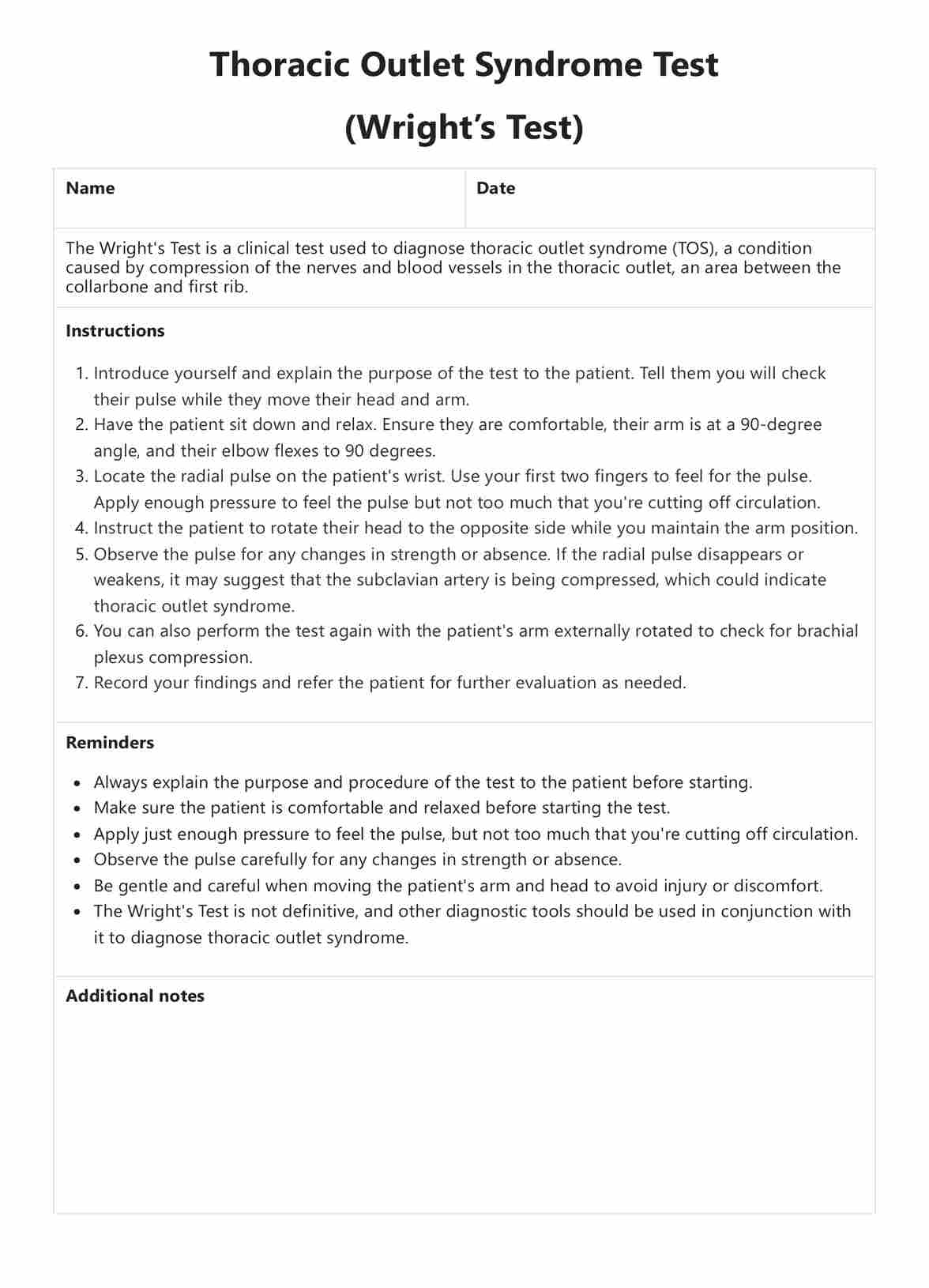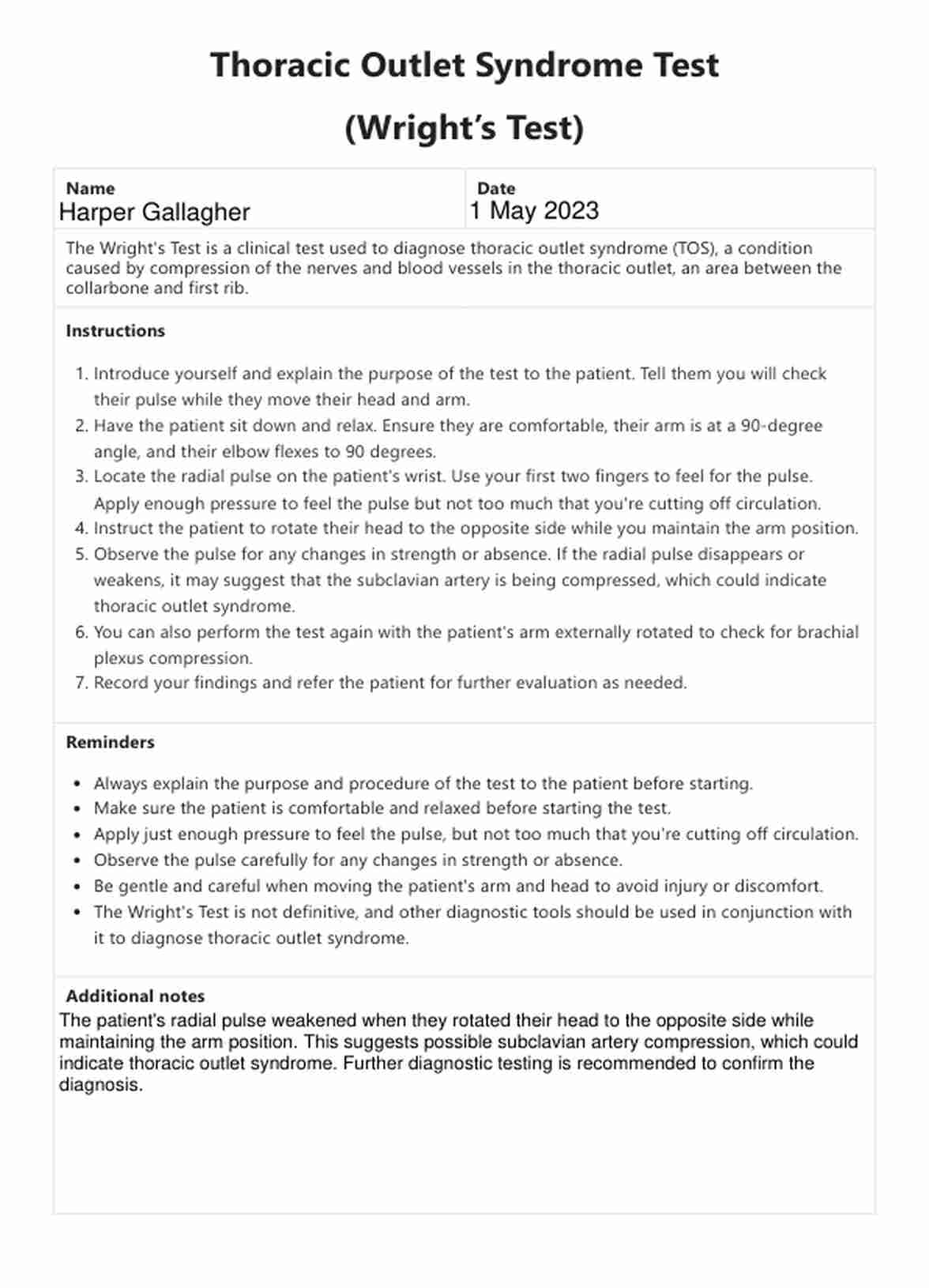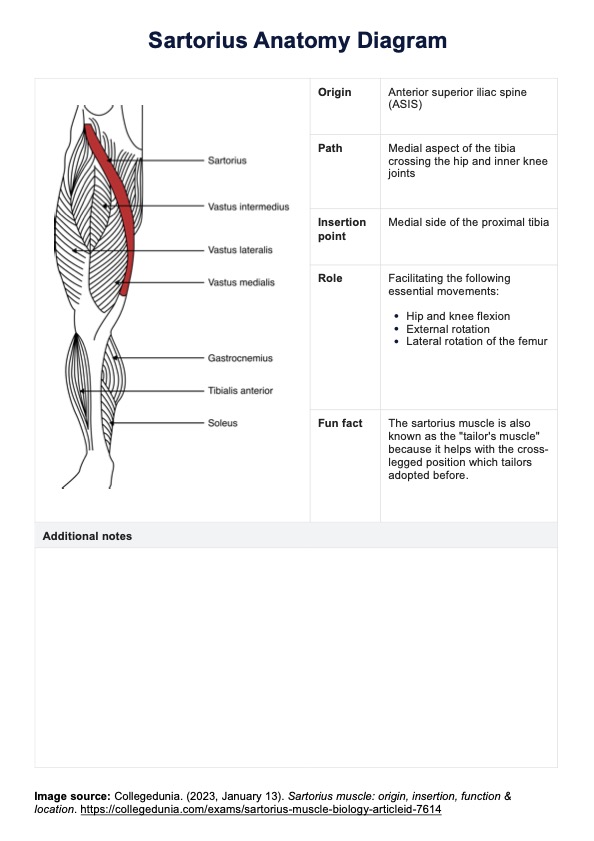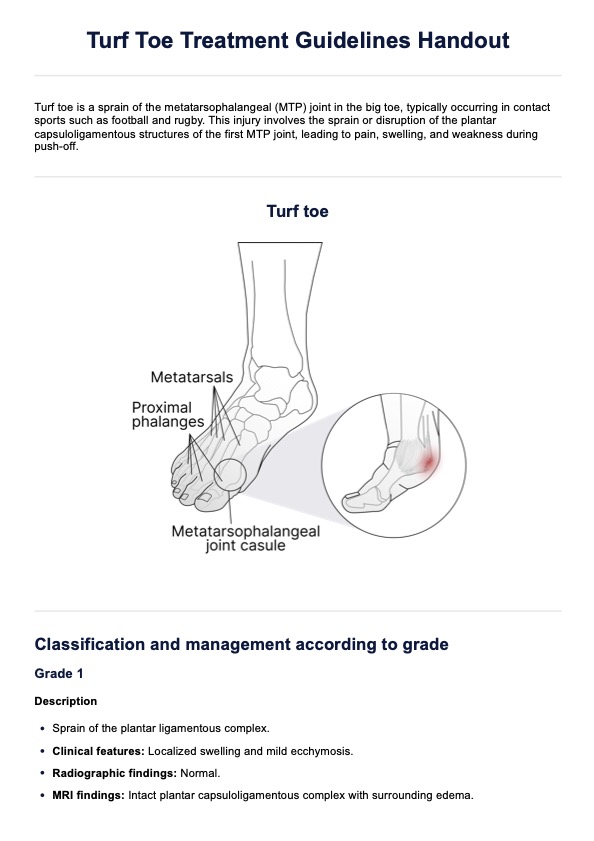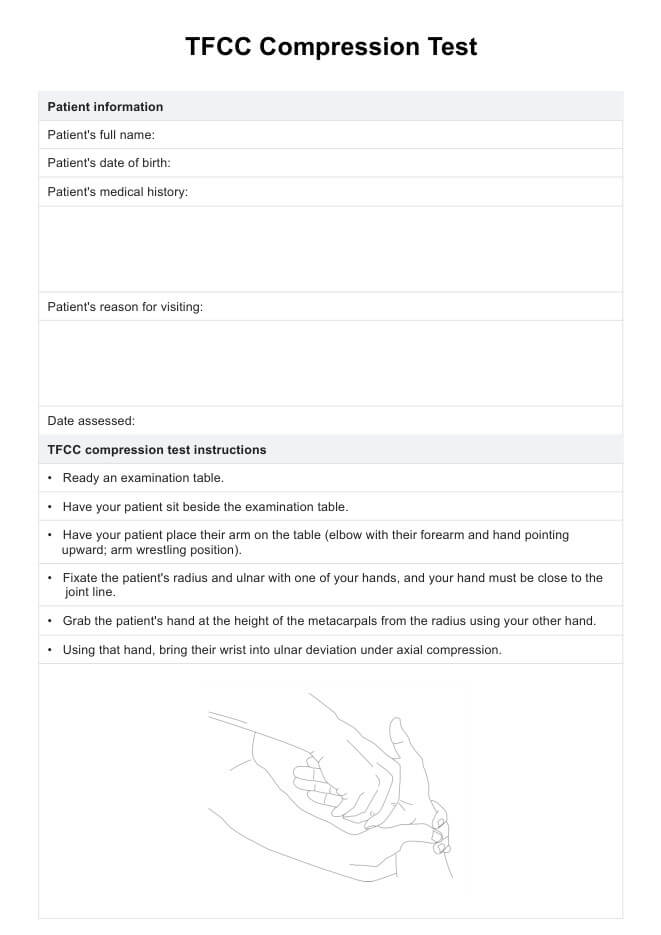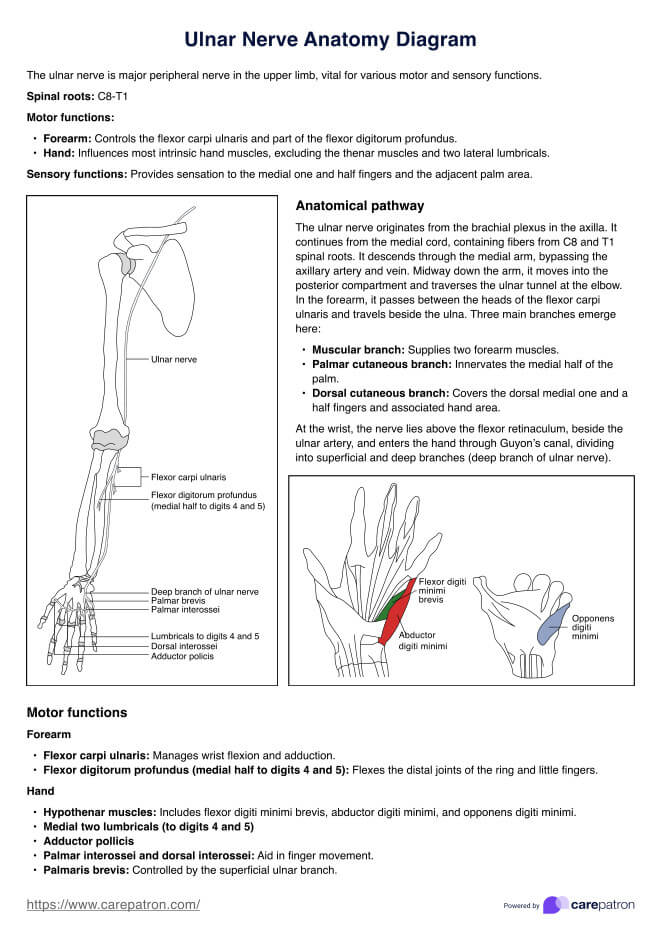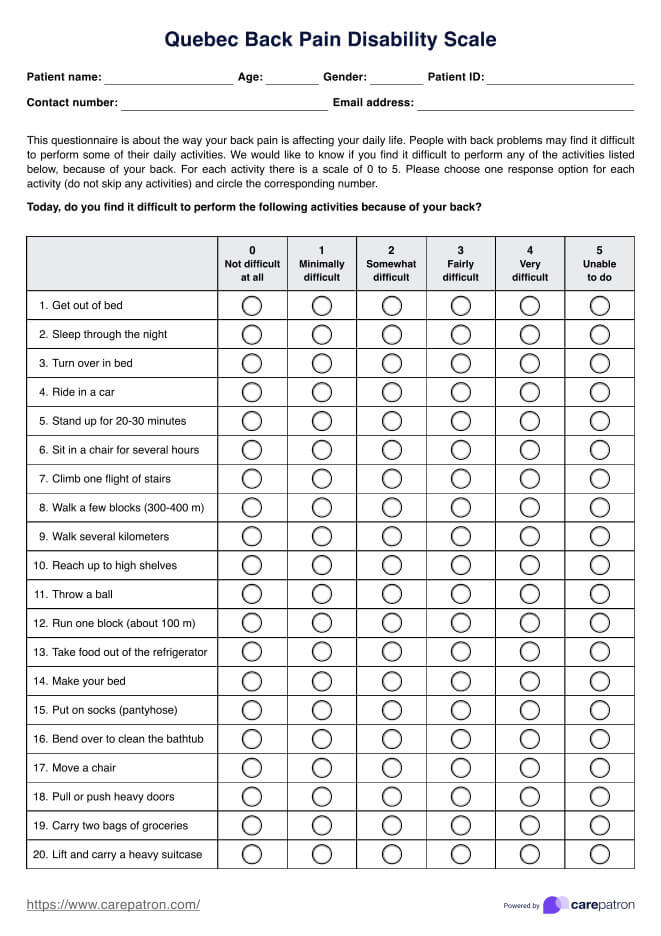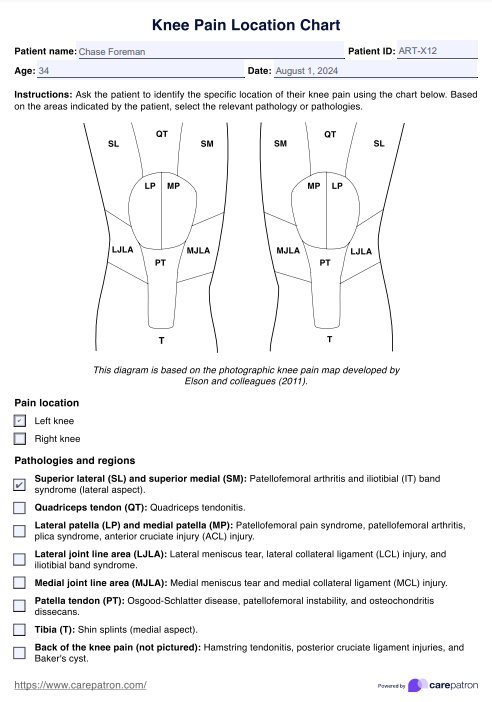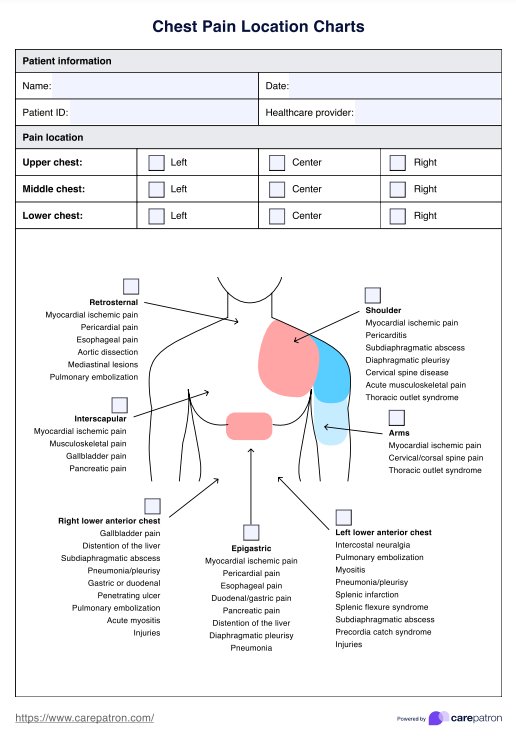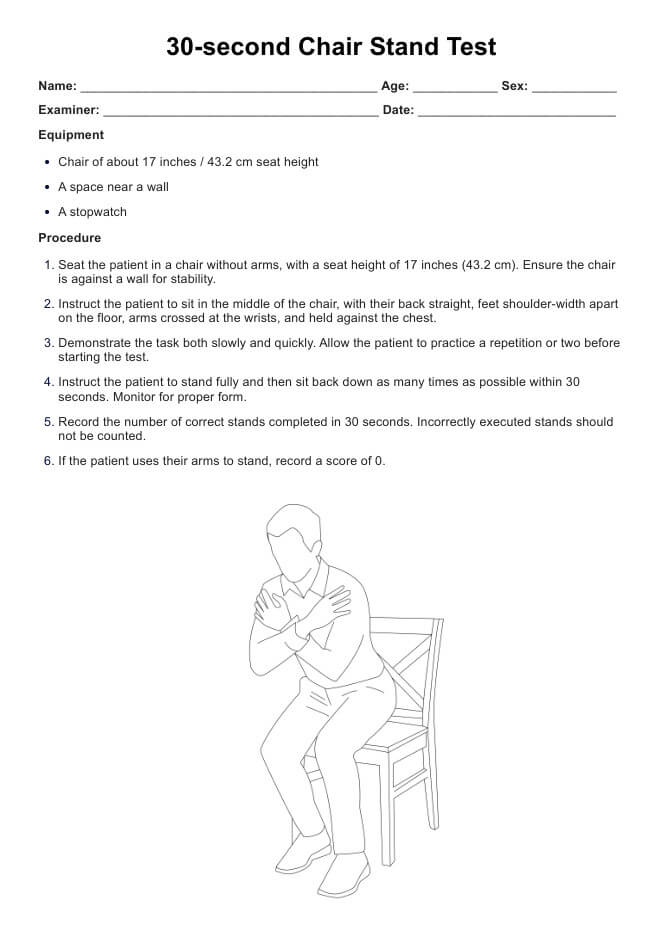Thoracic Outlet Syndrome Test
Learn more about Thoracic Outlet Syndrome Test and how it can be administered with our free PDF download.


What is a Thoracic Outlet Syndrome Test?
Thoracic outlet syndrome (TOS) is caused by compression of the nerves, arteries, or veins in the thoracic outlet region. This region is located between the collarbone and the first rib near the base of the neck. Symptoms can include pain in your arm, shoulder, neck, and even fingers, numbness, tingling, and weakness in the upper limb.
The Wright's Test is one of the most widely used physical exams for detecting TOS and can help diagnose the condition before further treatment. This is performed by a healthcare professional who will first palpate the radial pulse at the patient's wrist while seated with their arm abducted to 90 degrees and elbow flexed to 90 degrees. The healthcare provider then asks the patient to rotate their head to the opposite side while maintaining this position.
If the patient experiences a decrease or absence of their radial pulse, it suggests that the pectoralis minor muscle is compressing the subclavian artery. This can occur in cases of both neurogenic TOS and vascular TOS. The Thoracic Outlet Syndrome Test can also be repeated with the arm externally rotated to diagnose potential issues further.
Check out this video to see how the assessment is performed:
Thoracic Outlet Syndrome Test Template
Thoracic Outlet Syndrome Test Example
How does this Thoracic Outlet Syndrome Test work?
Our free Thoracic Outlet Syndrome Test provides a step-by-step guide on performing the exam so you can get results in minutes. Follow these steps to get started:
Step One: Download the template
Get a copy of the free Thoracic Outlet Syndrome Test using the link on this page. You can also get it from the Carepatron app or our resources library.
Step Two: Explain the test to your patient
Discuss the test with your patient so they understand the purpose and process of this exam. This will help ensure everyone is comfortable and aware of what must be done.
Step Three: Begin the exam
Follow the instructions on the template to conduct the test. Ensure your patient is comfortable and relaxed throughout the process.
Step Four: Evaluate the results
Once completed, review the results to determine if imaging or further evaluation is needed once completed. Consult with your patient and communicate any findings or concerns you may have.
Step Five: Update records
Update your patient's medical records with a complete exam report and make any necessary referrals.
Thoracic Outlet Syndrome Test Interpretation
The Wright's Test or Thoracic Outlet Syndrome Test is a valuable tool to evaluate the presence of TOS. If your patient's radial pulse was absent or diminished at any point during the test, then TOS may be present. Other signs of TOS may include a positive Adson's Test, a positive Roos Test, or a positive Scalene Stretch Test.
To better understand your patient's condition, your evaluation should include an analysis of the patient's medical history and physical exam results. Depending on the severity of the condition, you may also need to conduct special tests such as muscle strength evaluations, nerve conduction studies, or imaging tests.
When to use these Thoracic Outlet Syndrome assessments?
These assessments should be used when a patient is suspected of having thoracic outlet syndrome. The tests will help you understand the condition and the possible causes. You can also you this if or when:
You want to assess the patient’s pain and discomfort levels
This TOS Test can help you evaluate how much pain and discomfort your patient feels. It can assist in determining the severity of their condition.
You want to measure range of motion
Using this assessment can help you understand the limitations in movement they are experiencing. It will also help you determine if any treatments are needed to improve their mobility and flexibility.
You want to determine if the patient has any physical impairments
The Thoracic Outlet Syndrome Test can help you measure and assess the patient's physical impairments. It will also help you make informed decisions about treatment approaches for your patient’s condition.
You want to identify any risk factors for TOS
By assessing the patient’s range of motion and physical impairments, you can identify any risk factors contributing to their condition. This can help you determine the best course of action to reduce potential risk factors and prevent TOS from occurring or worsening.
Who is this Thoracic Outlet Syndrome Test PDF for?
This PDF can be used by any medical professional who needs to assess a patient’s physical abilities, especially those with thoracic outlet syndrome. Specifically, this is a handy tool for:
- Physical therapists
- Occupational therapists
- Physiatrists
- Sports medicine specialists
- Orthopedic surgeons
- Nurses
- Primary care providers
You can also use this in various settings, such as inpatient rehabilitation hospitals, outpatient clinics, and home health.
.png)
Benefits of these free Thoracic Outlet Syndrome Test Templates
There are several benefits to using this free Thoracic Outlet Syndrome Test PDF, including the following:
It's quick and easy
Our free Thoracic Outlet Syndrome Test PDF is designed to be easy to use and complete in a short amount of time. This makes it ideal for busy clinicians who need to assess a patient quickly and accurately.
It's evidence-based
This test is based on the most up-to-date evidence so that you can ensure reliable results. Additionally, the test has been validated in several clinical settings, so you can trust that it is a reliable measure of TOS.
It's cost-effective
This free Thoracic Outlet Syndrome Test PDF is a great way to save money on assessments. It's also a great way to increase efficiency in your practice by eliminating the need for expensive assessments.
It's entirely digital
This free Thoracic Outlet Syndrome Test is entirely digital, so you don't have to worry about printing it or sending it in the mail. You can access it from any device and easily store it in your electronic health record (EHR) system.
Why use this Thoracic Outlet Syndrome app?
Stop wasting time on tedious paperwork, and let Carepatron take the reins! With our intuitive practice management software, you can spend less time in the office and more time with your patients.
Our simple yet powerful platform offers a range of features, including appointment scheduling, patient records, billing and insurance management, customized reports, and more. We make it easy for you to stay organized and on top of your practice. Plus, our friendly customer support team is always just a phone call away if you ever need help.
Switch to Carepatron today and take your practice to the next level. Our software is so user-friendly that you’ll be up and running in no time - we guarantee it!
.png)
Commonly asked questions
This test doesn't have a scoring system but is designed to provide information about the signs and symptoms of thoracic outlet syndrome. You can use this information to further assess or diagnose your patient's condition.
This Thoracic Outlet Syndrome Test lets you quickly assess or diagnose your patient's condition. It also helps you keep track of your patient's progress over time. This test can also help you determine if conservative treatment options are working or if more advanced treatments may be needed.
The Thoracic Outlet Syndrome Test looks for signs and symptoms that may indicate the presence of thoracic outlet syndrome.


